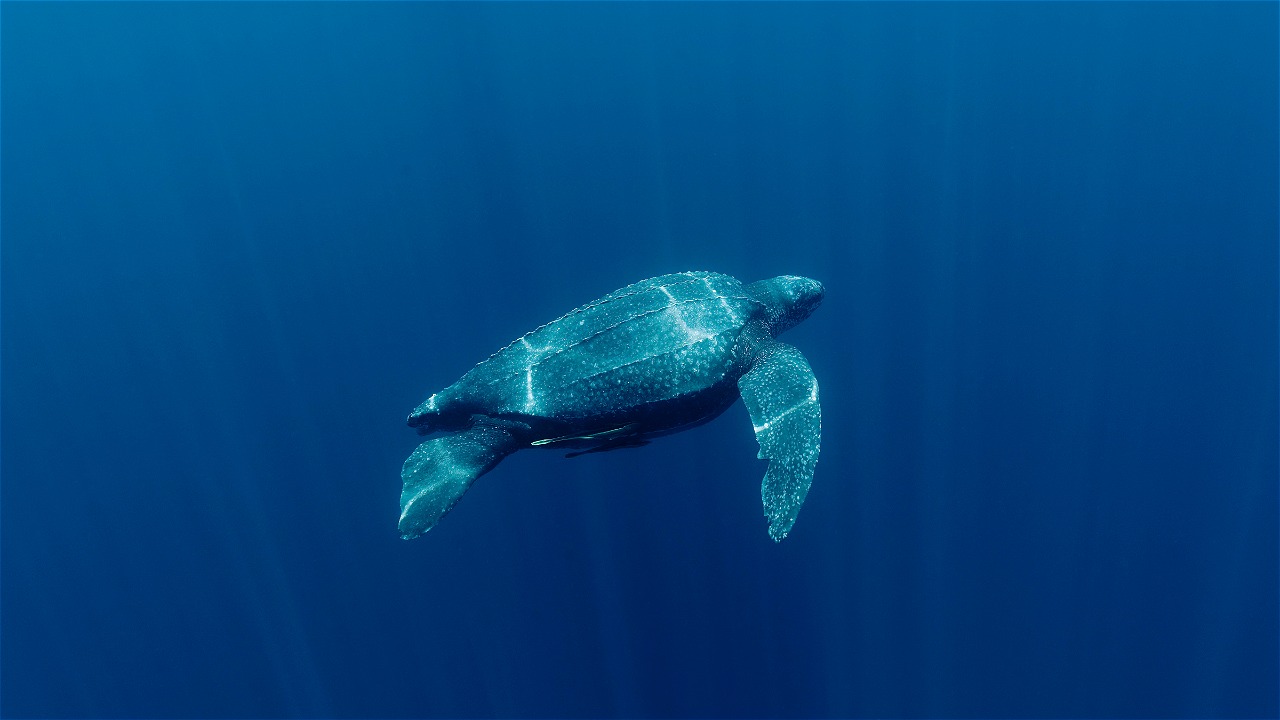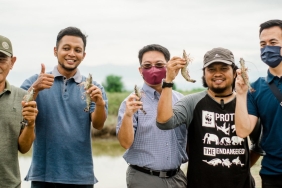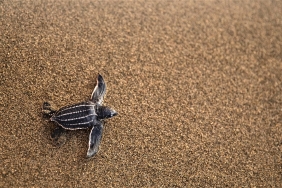THE STORY OF THE RESCUE OF SALAWAKU, A LEATHERBACK TURTLE ON BURU ISLAND
By: Syarif Yulius Hadinata - Marine Species Assistant WWF-Indonesia Inner Banda Arc Subseascape
The crashing waves and rumbling waves that morning were still the same as a few days ago. Quiet, calm and cool with the breeze. The friction of the waving nyiur seemed to accompany the activities of the fishermen when they started looking for sustenance. But behind the silence, when entering the West and North wind seasons, the waves seem to be angry, breaking down the defense of the trees on the banks of the Waenibe River. This is the first symptom of abrasion that has begun to appear at one of the turtle nesting beaches in North Buru Island.
The banks of the Waenibe River estuary are a favorite location for fishermen to release fish from the net before returning to the net. Alex Kesaulya is one of them. The 46-year-old man who is familiarly called Om Alex works as a farmer and fisherman. Almost every day he goes to the sea or to the garden to support his wife and four children. As usual, that day he invited his friend Lukas Nikiyolu to go to the sea to set a net. Slowly, the oars moved across the sea to where the fish were gathered. Upon arrival, the net was released on the surface of the sea in the hope that many fish would be caught. Before the net had been set, Semi Tomhisa's scream was suddenly heard. Their colleagues were seen rushing to row the boat to get closer while calling out. It turned out that Semi was telling them that someone had killed a sea turtle near the Waenibe River. Suddenly, Om Alex and Lukas rushed to pull back the net to confirm the truth of Semi's story.
The oars are paddled faster than when Alex set out to net. The beach was getting closer, the pitch-black turtle with white spots was coming into view and it was certain that no one else was around. After landing the boat, Alex and Lukas approached. It turned out that the giant sea reptile was stuck on a stump that had been broken by the waves, not dead. The leatherback turtle, (Dermochelys coriacea), is called Salawaku by the people of Buru Island. The turtle looked helpless and almost helpless due to being entangled almost overnight. There was little energy left to keep the flipper paddling slowly to escape. On the neck, a blood-red spot was clearly visible from the friction of the salawaku as it struggled to break free. Luckily, he was still alive. After checking the surrounding beach, it can be concluded that the salawaku climbed to the beach but did not lay eggs due to the rocky condition of the nest. The journey back to the sea made it stuck.
"Seeing that condition, beta immediately ran home to get a machete and cellphone for photos, went running and ran back home too to make it fast," said Om Alex while demonstrating himself running. Meanwhile, Lukas cleaned up the other wood. The machete Om Alex had brought to cut the stump was not good enough for rescue efforts, as it was too close to the head and if it was wrong it would cause more injury. Everything was done, from shaking the stump so that it was uprooted or bent so that my salawaku could pass through, but to no avail. Until the thought of lifting and turning the salawaku, which can weigh up to 1 ton, but because it was only the two of them, the effort was in vain.< br />
After half an hour of thinking and trying, they finally levered the salawaku body using wood. The effort was not in vain, the stocky body of the female salawaku was lifted and shifted little by little. Again and again the pry was tried and finally they managed to release the salawaku from the stump snare, free to return to explore the ocean. This was the first time Alex and Lukas had rescued a sea turtle before they knew anything about sea turtle protection. So far, they only knew that sea turtles are protected animals, but did not understand how to save sea turtles and the importance of sea turtles to the ecosystem.
A piece of the story of the rescue of salawaku Buru Island that occurred in December 2017 shows that there is already an awareness of the Waenibe Village community who used to consume sea turtles. In the 1980s and 1990s, sea turtles from Buru Island were sold to Ambon City, but over time, the number of people consuming sea turtles has decreased. The community slowly realized the importance of sea turtle conservation. The light of sea turtle conservation in North Buru Island is beginning to burn. The task ahead is to keep that light on the conservation path, and then pass it on to other communities.





